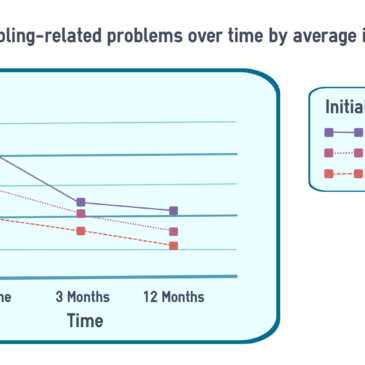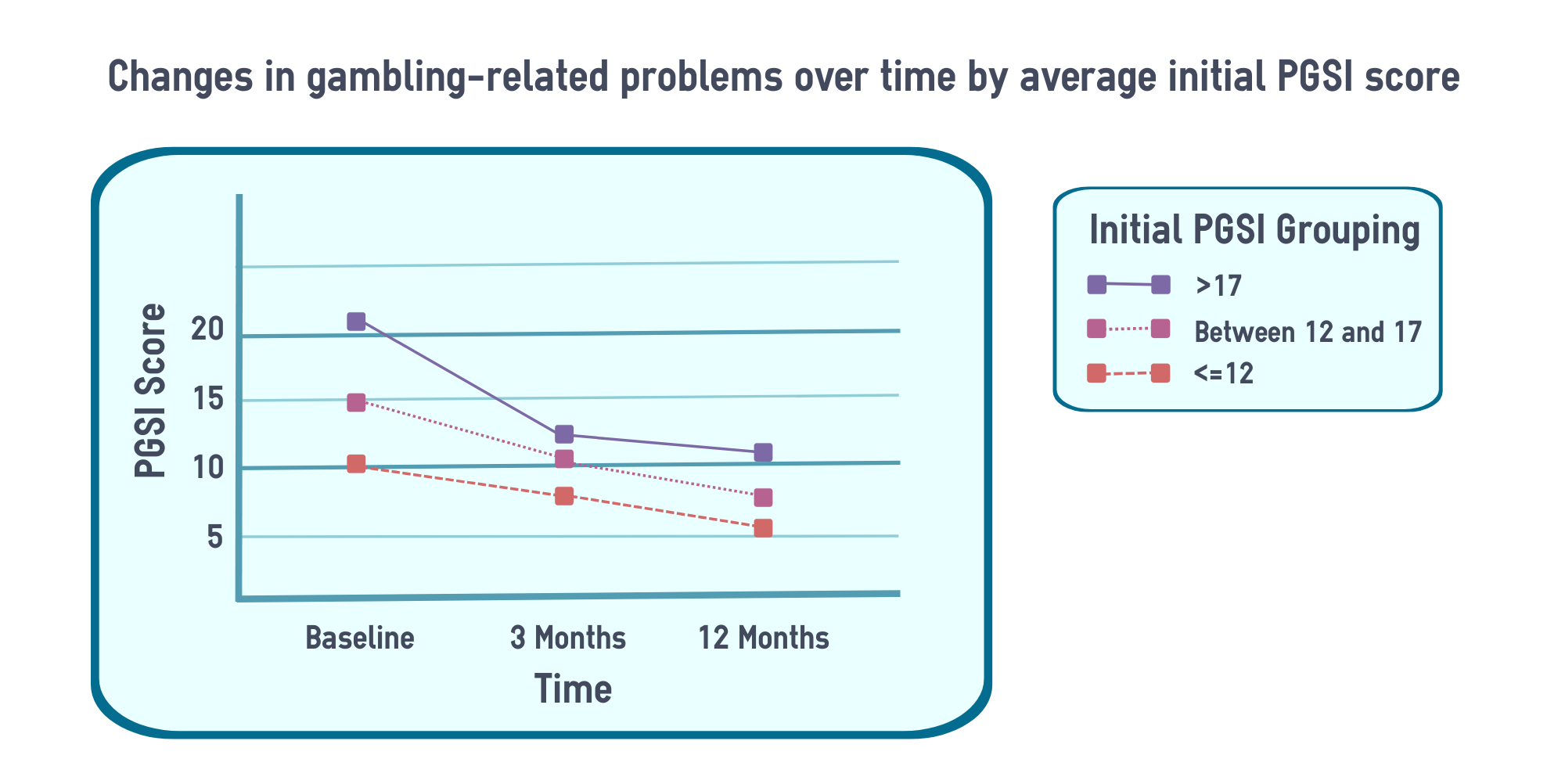Approximately 0.3% of the U.S. population experience gambling disorder, or about 880,000 people. For comparison, this is more than the number of people who live in South Dakota. Many of these people are unsure about whether they can quit or control their gambling behaviors by themselves or even with the help of a professional. Yet many people with gambling disorder do recover on their own, in the absence of professional treatment. This week, as part of our Special Series on Self-Directed Recovery, The WAGER reviews a study by Vladyslav Kushnir and colleagues that explored self-directed change among people with gambling-related problems.
What is the research question?
How many people with gambling-related problems experience meaningful improvement in the absence of professional treatment, and does the initial severity of the problem influence the extent of improvement?
What did the researchers do?
The researchers recruited 167 participants from Ontario, Canada to participate in a year and a half long study. To be eligible to participate in the study, participants needed to be aged 19 or older, score a five or higher on the PGSI gambling screen,1 and considering quitting or cutting back on their gambling. The researchers grouped participants by their PGSI scores (i.e., <=12, between 12 and 17, or >17) and then tracked how these scores changed over time. They removed from their analyses any participant who attended formal treatment during the study period.2
What did they find?
Almost 30% of study participants reduced and maintained their gambling behaviors below problem levels1 for at least a year during the 18-month study period. People with the most severe problems (i.e., PGSI scores greater than 17 at the beginning of the study period) improved the most at 3 months, compared to the other two groups (see figure). At the end of the study, participants reported significantly less frequent gambling, less money spent gambling, and fewer gambling-related problems.
Figure. Change in gambling-related problems over time by average initial PGSI score. Click image to enlarge.
Why do these findings matter?
For people with gambling-related problems, it is important to recognize that self-directed change is real, and even people with the most gambling-related problems might be capable of self-change.
Every study has limitations. What were the limitations in this study?
Participants had to seek out the researchers in order to enroll in the study. These people might represent people with gambling-related problems who are especially motivated to quit. Participants had contact with the study staff, and that contact could have encouraged them to reduce their gambling.
For more information:
If you think that you or anyone you know might be experiencing substance use or gambling-related problems, you can find help resources on The BASIS addiction resources page.
— Pat Williams
What do you think? Please use the comment link below to provide feedback on this article.
________________
1 Participants with scores lower than 5 were considered “low-risk” gamblers, between 5 and 7 were “moderate risk” gamblers, and between 8 and 27 were “problem” gamblers.
2 The researchers defined formal treatment to include doctors, psychologists, psychiatrists, inpatient or outpatient gambling treatment, religious leaders, counselors, social workers, and prescribed medications.





